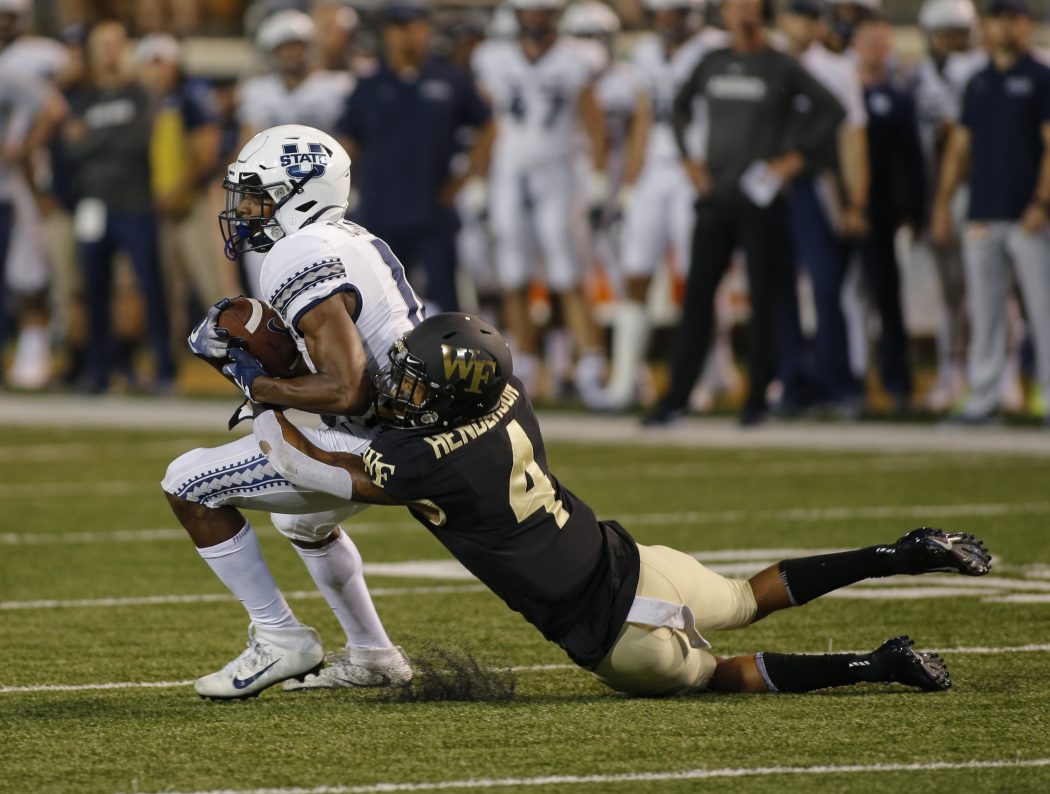Utah State must learn to win close games
Utah State has a problem. A big problem.
They can’t win close football games.
It’s not that the Aggies can’t win big football games, games that matter a lot to the program such as rivalries, bowl games, etc. They just can’t win close games, no matter the opponent. Be they Power 5 programs, lowly foes of the Sun Belt or Conf-USA, or even fellow Mountain West teams. Doesn’t matter. If it’s a close game, the Aggies are liable to lose.
The most interesting, and also most frustrating aspect of this trend is that it can’t be blamed on one coach, staff, player, athletic department or, really anything. Utah State just loses close games, it’s a reality for the school for nearly the past decade.
Since the start of the 2012 season, the final year of Gary Anderson’s first stint at Utah State, the Aggies presumably made its jump from irrelevant program to budding G5 powerhouse. Utah State is now 4-13, including last Friday’s gut-punch of a game at Wake Forest, in contests decided by less than a touchdown. Narrow the field to games within three points and the Aggies are 1-10.
And that’s a problem.
It’s a huge problem for a number of reasons. Most notable among them is that, barring a double-digit win in the Aggies’ favor, USU struggle for marquee victories, and those struggles exponentiate versus Power 5 teams. The issue with beating P5 teams is particularly troubling. USU can’t move forward as a program without winning on the the proverbial proving grounds of college football. Downing a team from one of the few conferences national media care about is the way for Utah State to end up in the national spotlight in a good way.
Utah State is 2-17 against the stronger conferences since 2009, the start of the first Andersen era. Those two wins are against Utah (2012) and Wake Forest (2014), who went on to go 5-7 and 3-9, respectively.
There are plenty who will claim these P5 losses as “moral victories,” citing the players ability to “learn from the experience” or because they held close with a quality program, especially on the road. However, therein lies yet another issue: the Aggies aren’t learning and they’re at a point as a program where so-called moral victories amount to very little.
There are only so many times where you can get hyped about nearly beating superior programs. Eventually, you have to stick the landing. It’s what Boise State and UCF do. It’s what Utah did prior to becoming a P5 team themselves, and it’s what Utah State must do to advance as a program.
This is all at the risk of sounding greedy. Nestled in the quiet, relatively small Cache Valley, Utah State is never going to ascend much higher than they are in the NCAA hierarchy without some serious intervention. 10-win seasons with the occasional semi-prestigious bowl game appearance are the likely ceiling for the Aggies in the foreseeable future. That should make fans happy.
Simply maintaining the ability to win eight games a season on a consistent basis would be a a major step in making Utah State a quality program. This is after all, a school with only six winning seasons once since 1980. It’s just that the Aggies are so gosh darn close to that next step. The only thing holding themselves back is the guts, attitude or whatever other sports cliche you could name, necessary to pull out a win in a tightly contested game.
Just look at these losses in the last 10 years that, with an extra effort or a benevolent bounce of the ball, could be a signature win for Utah State.
2009 — Texas A&M, lost 38-30
2010 – Oklahoma, lost 31-24
2011 – Auburn, lost 42-38
2012 – Wisconsin, lost 16-14
2013 – Utah, lost 30-26
2013 — USC, lost 17-14
2018 – Michigan State, lost 38-31
2019 – Wake Forest, lost 38-35
Several of these games featured blown leads or narrowly missed opportunities. One or two is not good, but acceptable given the literal and metaphorical wealth gap between USU and the P5 schools. Six or eight? In a 10 year span? That’s far less acceptable.
Understand just what one of these games, if flipped to a win, would have meant to Utah State as a program, as a brand and for the fans. Think back to the win over Utah in 2012. That was a huge win in the long run and many of the younger Aggie fans first great memories are from attending or just being around Logan during that victory.
Losing to Wake Forest and dropping yet another winnable game against a quality non-conference opponent isn’t the end of the world. It’s certainly not the end of this season.
But seriously, when will the Aggies finally pull it off?

